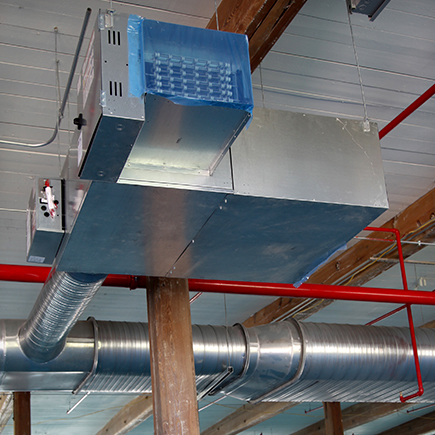
November 13, 2024
During any construction or remodeling project, it’s essential to keep construction dust contained. Dust particles from drywall, sanding, and other materials can contaminate the air, posing health risks and damaging furniture and appliances. Using a dust wall and other dust containment solutions protects air quality, prevents unnecessary cleanup, and shields valuable items from costly dust-related damage.
We’ve all seen the relentless spread of dust during construction or a home renovation. Dust has an uncanny way of ending up in every nook and cranny, traveling through ductwork, on clothing, or even with a slight breeze. And while dust spreads rapidly, cleaning it up is a whole other challenge. Fortunately, with the right dust barrier system, you can significantly cut down on cleanup time and improve air quality on your site. Explore Trimaco’s four simple, effective tips on how to prevent dust during construction.
Isolating your work area is one of the most effective ways to keep dust confined. Trimaco’s dust containment kits provide everything you need to create a reliable dust barrier for construction. By pairing plastic sheeting with dust containment poles and zipper door, you can quickly set up an enclosure to protect other parts of the home or jobsite. Dust walls keep dust confined to the workspace, helping you maintain a cleaner, safer environment.

An often overlooked step in dust containment is sealing off ducts. By using HVAC film to cover return ducts, you prevent dust from traveling through the HVAC system to other areas of the building. This simple addition to your dust containment system ensures that airborne particles stay isolated within the workspace.
To prevent dust particles from settling into fabric and other surfaces, cover furniture and exposed surfaces with plastic sheeting. Trimaco’s Cling Cover Plastic Sheeting is a self-adhering film that attracts dust, helping pull particles from the air. To keep floors dust-free, use a durable floor protector like the SuperTuff Surface Protector.
While it may seem tedious, taking time to clean up at the end of each day helps maintain a dust-free zone. Use a broom or vacuum, feather duster, and microfiber cloths to wipe down surfaces, ensuring that dust doesn’t accumulate overnight. This daily maintenance minimizes the overall dust buildup and keeps your dust barrier system effective.
The spread of dust during construction is inevitable, but with a few precautionary measures and a reliable dust containment system, you can significantly reduce cleanup and protect your surroundings. Ready to take control of dust on your jobsite? Explore Trimaco’s full range of dust barrier systems and jobsite protection products for an effective solution.
Get Social
1 month ago
Video
Share on Facebook Share on Twitter Share on Linked In Share by Email
1 month ago
Video
Share on Facebook Share on Twitter Share on Linked In Share by Email
1 month ago
Photo
Share on Facebook Share on Twitter Share on Linked In Share by Email
1 month ago
Video
Share on Facebook Share on Twitter Share on Linked In Share by Email
1 month ago
Video
Share on Facebook Share on Twitter Share on Linked In Share by Email
Cling Cover is premium plastic sheeting clings to almost any surface, attracting overspray and keeping your workspace clean, bright, and protected.
2#trimaco #totaljobsiteprotection #savetimesavemoney #work #paint #painting #construction #constructionproducts #build #buildzoom
Prepping for renovation with Easy Mask Tape & Drape 🚨🚨
@refreshhomeimprovements
#trimaco #totaljobsiteprotection #savetimesavemoney #work #paint #painting #construction #constructionproducts #build #buildzoom #building #homebuild
Refresh your kitchen on a budget with an easy DIY backsplash ✨
4Check out our latest blog for a step by step guide: https://trimaco.com/blog/how-to-diy-a-kitchen-backsplash/
#trimaco #totaljobsiteprotection #savetimesavemoney #work #paint #painting #construction #constructionproducts #build #buildzoom
Highly absorbent and reusable, Trimaco’s Wonder Rag is your go-to for a spotless finish
2#trimaco #totaljobsiteprotection #savetimesavemoney #work #paint #painting #construction #constructionproducts #build #buildzoom #building #homebuild